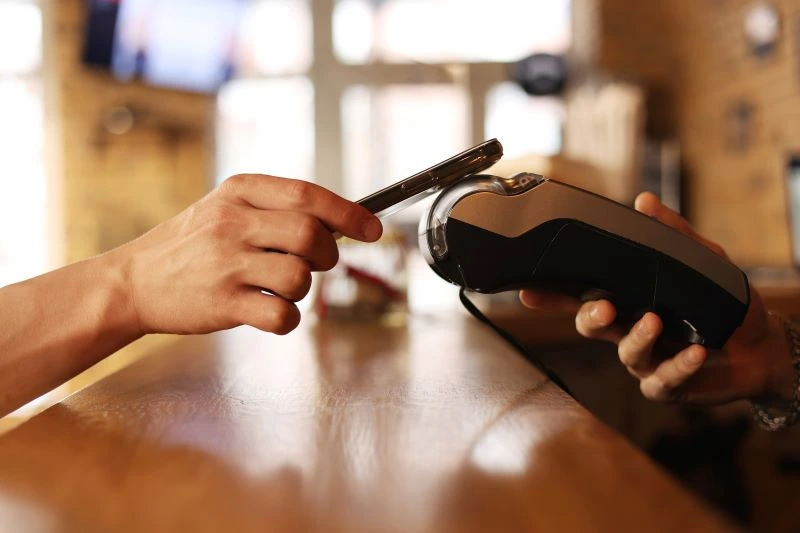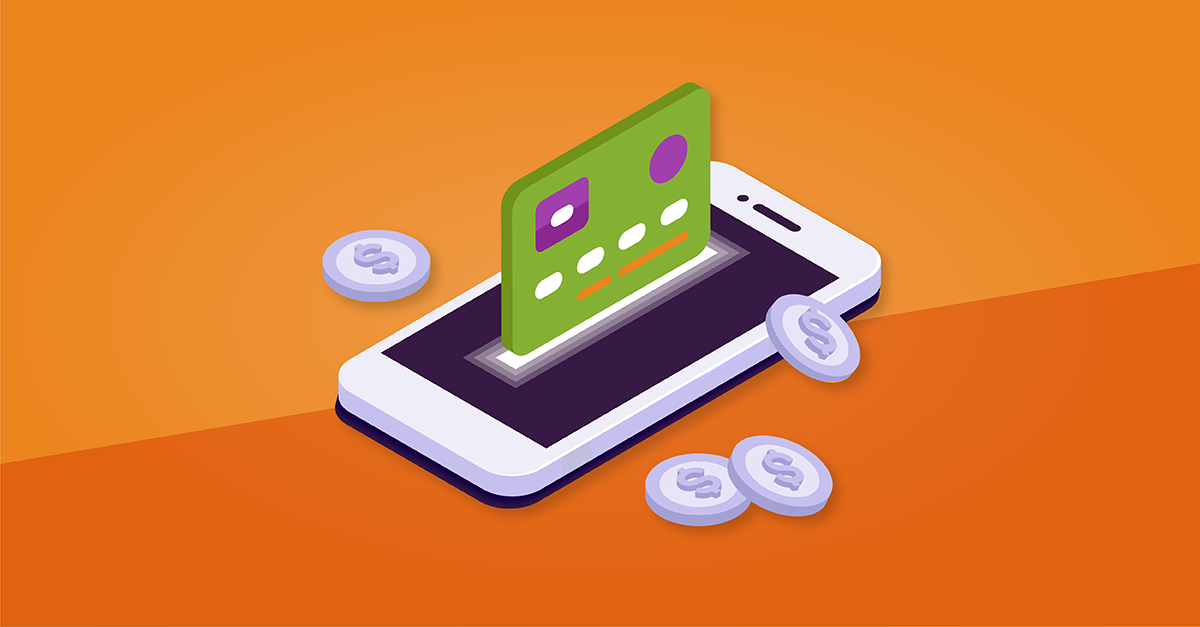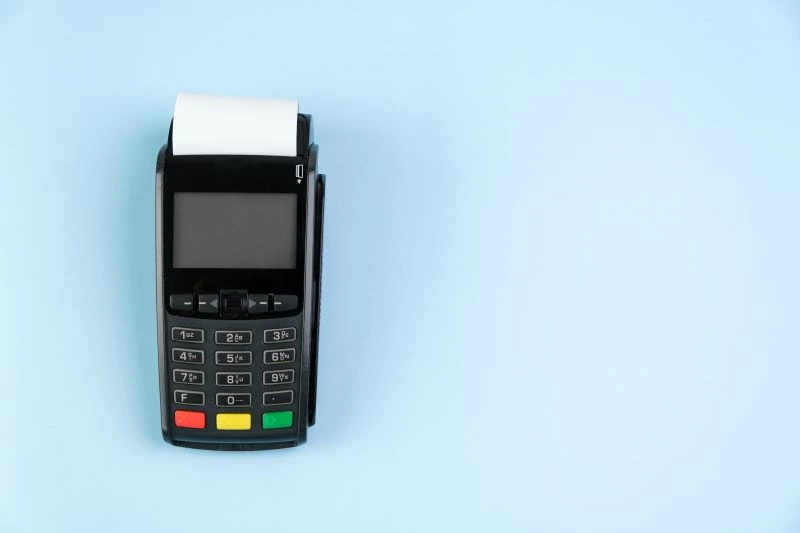The acronym POS stands for "point of sale," and as you might expect, it technically refers to the time and place where a transaction occurs. When referred to in payments, however, POS is typically used to describe a physical or cloud-based point-of-sale system.
It's important for business owners to understand point-of-sale transactions and the role they play—or could play —in daily operations. POS systems are full-service devices, both in-person and cloud-based, that help you manage staff schedules, floor space, inventory, and more. When you understand the POS demands of your business, you become better equipped to choose the right provider for you.
Below, we'll go over everything you need to know about point-of-sale, POS transactions, and how to make a POS system work for you.
What Is a POS Transaction?
At its most basic level, a POS transaction is defined as the moment when an exchange of a product or service for payment is finalized. A POS transaction can include a range of payment methods including credit and debit cards, cash, mobile payments, and loyalty points.
Point-of-Sale Transaction Types
Before the Internet, point-of-sale transactions typically had to occur in person. Thanks to the explosion of digital technologies and payment options over the last 30 years. However, POS transactions can now take place virtually. Here are the two main kinds of POS transactions:
Online
Online POS transactions are what they sound like—any sale that occurs on the internet via the cloud. Customers usually use credit cards for these types of transactions, but they can also be made using debit cards, cryptocurrency, or online money transfers via payment platforms like PayPal.
Offline
Offline POS transactions are the most commonly used point-of-sale type. These transactions occur in person, where a customer uses a POS system to pay for their purchase. In the case of offline transactions, business owners can verify that customers have successfully made a payment, decreasing the chances of fraud.
If you don't have an internet connection, experience service interruption, or are operating remotely in an area with no wifi, your POS system may allow you to process a credit or debit transaction. This is done by storing the customer's information and sending it through to your payment processor when a connection is re-established.
POS Transaction Example
You may have an idea of what a POS transaction is, but if you want to know what one looks like, here are two examples:
Let's say you operate a farmers market vendor that sells homemade hot jellies and jams. A customer approaches and wants to purchase your peach-habanero best-seller. They insert their credit card into your POS device, you give them a jar of jelly and boom — that's a POS transaction.
Alternatively, you may operate an online retailer that sells CBD sleep aids for dogs. After browsing your products, a pet owner chooses the one that fits their needs, inputs credit card information, and presto: Another POS transaction has been completed.
POS Debit vs. POS Credit Transactions
Debit transactions and credit transactions differ in several respects, the main one being that if you want to make a debit purchase, you must have the amount of the purchase available in your checking account. With a credit transaction, your card issuer loans you the amount of the purchase, so you only need to have available credit rather than direct access to funds.
From a business owner's perspective, debit transactions typically carry fewer fees. This is because an amendment to the 2010 Consumer Protection Act limits the fees banks can charge for debit transactions. That limit comes to 0.05% + 22 cents per transaction, but you should always be aware of additional fees that your POS system provider and merchant services provider may charge.
Credit card fees, on the other hand, can vary wildly between POS system providers, card issuers, and transaction mediums. Always research the fees a POS provider charges for credit, as these can add up and count against your bottom line.
How to Reconcile a POS Transaction
POS reconciliation is one of those annoying accounting jobs that has transformed thanks to technological innovation. At a basic level, POS reconciliation means ensuring that your POS sales records match up with the funds received from customers. Basically, you look at two sets of numbers—the payments you've actually received and those you've recorded—and make sure they are equal. This ensures that you will catch any potential fraud or accounting errors, so it's crucial that you establish a regular reconciliation routine.
Most POS systems allow you to perform reconciliation tasks easily, as they allow you to track payments and inventory electronically.
What Is a POS System?
Now that you know what a POS transaction is, you may be wondering what exactly constitutes a POS system. A POS system is a combination of hardware and software that accepts and processes payments. If you're a cash-only business, your system may be no more than a cash register and receipt printer. If you have a more complicated business model and accept electronic payments, you'll need hardware like card readers and payment terminals, along with software that can process electronic transactions.
Key Components and Features of an Effective POS System
What should you look for when searching for the best POS system for your small business? Continue reading for the top features to consider.
Software and Business Management Tools
Software is essential to any POS system, as it's what makes the entire operation function. The software your POS system provider offers will allow you to process electronic payments and can give you access to a wide range of other applications and third-party services that may be tailored to your business's unique needs.
Integrated Payment Processing
Many POS providers offer integrated payment processing, which not only accepts the transaction but communicates with banks and credit card providers to execute the transfer of funds. Some high-risk merchants may find they need a separate payment processor that caters to their needs, in which case they'll need to make sure the POS system they choose is compatible with third-party payment processors. For most other merchants, however, an integrated payment processing system streamlines sales and reduces costs.
Loyalty Programs, Staff Management, and Support
Other features POS systems may offer include loyalty programs, staff management, and support. This is why it's important to evaluate your business needs openly and honestly before choosing a provider. Some systems make it easy to store customers' contact and purchase info in order to automatically offer them rewards and deals. If you're a restaurant owner, for example, you may require a POS system that also handles staff table assignments, hours, and more.
Finally, since you'll want to spend as much time as possible working on your business, not troubleshooting your POS system, you'll want to choose a provider that delivers the right level of customer support for your expertise and knowledge.
POS System: Costs and Fees
The two main upfront costs associated with POS systems are those for hardware like credit card readers and terminals, and software, like monthly subscriptions to your provider's services. Some providers offer packages that don't require a monthly subscription. As always, you should evaluate your needs and make your choice accordingly.
Fees are another cost associated with POS systems. They come primarily in the form of transaction fees for credit and debit purchases. As mentioned earlier, debit fees are capped by the federal government, while credit card fees go up and down depending on the provider. There may be other fees associated with add-ons and third-party integrations, along with other services your provider offers, so you should ask about fees upfront to better understand the total cost of a POS system.
Understanding Merchant Descriptors
Have you ever looked at a bank or credit card statement, seen a charge, and wondered what it was? That's a merchant descriptor. Descriptors show on the customer's end, so it's important to ensure clarity to avoid confusion and any unnecessary fraud claims.
There are a few main kinds of descriptors to consider, which we'll cover below.
Static descriptors
Static descriptors remain the same regardless of the transaction. This means your small cafe and grocer, for example, may indicate "Bree's Best Foods – POS" as the description that appears on every customer's statements, no matter what they purchased or how they purchased it.
Dynamic descriptors
Let's say you want to offer customers a little more information about what they purchased, or how they purchased it. Your merchant description may automatically change depending on the item purchased and the method used. In this case, the description might read, "Bree's Best Food Cafe Credit POS," or something along those lines. If you want to use dynamic descriptors, make sure your POS system offers them.
Soft descriptors
Soft descriptors are the descriptions that show up on a customer's account while an electronic payment is still pending. You frequently see these in restaurant charges, where tips are processed after the transaction has initially occurred. Sometimes the soft descriptor lists the payment processor's name instead of the merchant's name. For example, the descriptor may show "Square POS sale" instead of "Bree's Best Foods". This can be a little confusing on the customer's end, but it usually resolves quickly.
How to Choose a POS System for Your Business
Business owners should always come to a thorough understanding of their unique needs and desires before choosing a POS system. The main components to understand are your hardware and software requirements. Beyond that, there are a near-infinite number of add-ons, integrations, and other bells and whistles that may help your business operate more smoothly. One place to start is to examine which systems other merchants in your industry use, as many POS providers cater to specific types of businesses.
Frequently Asked Questions (FAQs)
In banking terms, POS basically means the same thing: point-of-sale. Specifically, if you see "POS" on your banking statement, it means you used your debit card to make a purchase.
You must return the purchased product to the merchant and be in compliance with their return policy for a refund. Usually, the refund is issued through the POS system and will be for the amount you paid for the product. It can take several days for a POS refund to show up on your account. If you suspect fraud, contact your bank or card provider to verify the transaction.
POS transactions are traceable if you use a credit or debit card, as there are electronic records of the payment. Looking at your bank statement and checking your receipt for any confirmation or tracking numbers will help with transaction tracking.
If you use cash and don't input any of your identifying information into an electronic system, your point-of-sale transaction will likely not be electronically traceable.
A POS withdrawal occurs when you use a debit card to receive cash funds from a POS terminal. You have likely encountered this feature at grocery stores, where POS terminals may ask if you want cash back with your purchase. Not all POS systems or debit card-issuing banks offer this feature, so it's best to check with your provider first. And, of course, you must have funds available in your account to initiate a withdrawal.
A POS deposit is a deposit from a point-of-sale terminal. Customers typically see POS deposits on their bank statements when they receive a refund from a debit card transaction.






